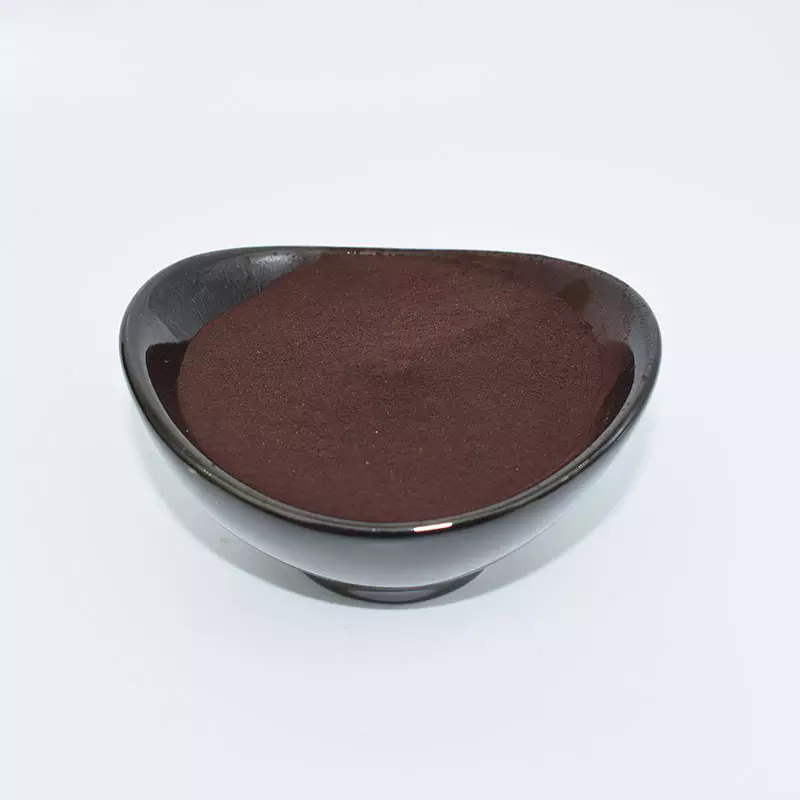4-Phenoxyphenol
Synonym(s):Hydroquinone monophenyl ether
- CAS NO.:831-82-3
- Empirical Formula: C12H10O2
- Molecular Weight: 186.21
- MDL number: MFCD00002331
- EINECS: 212-611-1
- SAFETY DATA SHEET (SDS)
- Update Date: 2025-02-23 21:28:46

What is 4-Phenoxyphenol?
Chemical properties
beige crystalline powder
The Uses of 4-Phenoxyphenol
4-Phenoxyphenol is a porous organic material with dumbbell channels that appear throughout its structure. These channels can also host solvent molecules during crystal growth. 4-Phenoxyphenol is also part of a group of phenolic compounds that have potential apoptotic activity, which can be used in the development of new treatments for cancer therapy.
Definition
ChEBI: 4-phenoxyphenol is a phenoxyphenol.
Flammability and Explosibility
Not classified
Properties of 4-Phenoxyphenol
| Melting point: | 80-84 °C (lit.) |
| Boiling point: | 177-180°C (11 mmHg) |
| Density | 1.1032 (rough estimate) |
| vapor pressure | 0.01-0.121Pa at 25℃ |
| refractive index | 1.6010 (estimate) |
| Flash point: | 177-180°C/9mm |
| storage temp. | Inert atmosphere,Room Temperature |
| solubility | toluene: 0.1 g/mL, clear |
| pka | 10.07±0.13(Predicted) |
| form | Solid |
| color | colorless to light brown |
| Water Solubility | insoluble |
| BRN | 2047182 |
| Stability: | Stable. Combustible. Incompatible with strong oxidizing agents. |
| CAS DataBase Reference | 831-82-3(CAS DataBase Reference) |
| NIST Chemistry Reference | 4-Phenoxyphenol(831-82-3) |
| EPA Substance Registry System | p-Phenoxyphenol (831-82-3) |
Safety information for 4-Phenoxyphenol
| Signal word | Warning |
| Pictogram(s) |
 Skull and Crossbones Acute Toxicity GHS06  Exclamation Mark Irritant GHS07 |
| GHS Hazard Statements |
H301:Acute toxicity,oral H315:Skin corrosion/irritation H319:Serious eye damage/eye irritation H335:Specific target organ toxicity, single exposure;Respiratory tract irritation |
| Precautionary Statement Codes |
P261:Avoid breathing dust/fume/gas/mist/vapours/spray. P264:Wash hands thoroughly after handling. P264:Wash skin thouroughly after handling. P270:Do not eat, drink or smoke when using this product. P271:Use only outdoors or in a well-ventilated area. P280:Wear protective gloves/protective clothing/eye protection/face protection. P305+P351+P338:IF IN EYES: Rinse cautiously with water for several minutes. Remove contact lenses, if present and easy to do. Continuerinsing. P405:Store locked up. P501:Dispose of contents/container to..… |
Computed Descriptors for 4-Phenoxyphenol
| InChIKey | ZSBDGXGICLIJGD-UHFFFAOYSA-N |
New Products
4,4-Difluoropiperidine hydrochloride tert-butyl 9-methoxy-3-azaspiro[5.5]undecane-3-carboxylate Indole Methyl Resin N-Isopropylurea N,N-Dicyclohexylcarbodiimide(DCC) MELDRUMS ACID 5-METHYLISOXAZOLE-4-CARBOXYLIC ACID Magnessium Bis glycinate Zinc ascorbate 1-bromo-2-butyne 2-acetamidophenol 9(10H)-anthracenone Erythrosin B, 4-Piperidinopiperidine 2-((4-morpholinophenylamino) (methylthio) methylene) malononitrile 2,4-dihydroxybenzaldehyde 3-(4-morpholinophenylamino)-5-amino-1H-pyrazole-4-carbonitrile Methyl 2-methylquinoline-6-carboxylate 2,6-dichloro-4-nitropyridine 4-Bromo-2-chlorobenzonitrile 2-(benzylamino)acetic acid hydrochloride 4-(tert-Butoxycarbonylamino)but- 2-ynoic acid 3,4-dihydro-2H-benzo[b][1,4]dioxepine 1-Phenyl-1-cycloprppanecarboxylicacidRelated products of tetrahydrofuran








You may like
-
 831-82-3 Para Phenoxy Phenol 99%View Details
831-82-3 Para Phenoxy Phenol 99%View Details
831-82-3 -
 831-82-3 98%View Details
831-82-3 98%View Details
831-82-3 -
 831-82-3 99%View Details
831-82-3 99%View Details
831-82-3 -
 4-Phenoxyphenol CAS 831-82-3View Details
4-Phenoxyphenol CAS 831-82-3View Details
831-82-3 -
 4-Phenoxyphenol CAS 831-82-3View Details
4-Phenoxyphenol CAS 831-82-3View Details
831-82-3 -
 831-82-3 99.0%View Details
831-82-3 99.0%View Details
831-82-3 -
 20677-73-0 (2,2-diethoxyethyl)methylamine 98%View Details
20677-73-0 (2,2-diethoxyethyl)methylamine 98%View Details
20677-73-0 -
 3-(4-(hydroxyamino)-1-oxoisoindolin-2-yl)piperidine-2,6-dione 98%View Details
3-(4-(hydroxyamino)-1-oxoisoindolin-2-yl)piperidine-2,6-dione 98%View Details
Statement: All products displayed on this website are only used for non medical purposes such as industrial applications or scientific research, and cannot be used for clinical diagnosis or treatment of humans or animals. They are not medicinal or edible.
